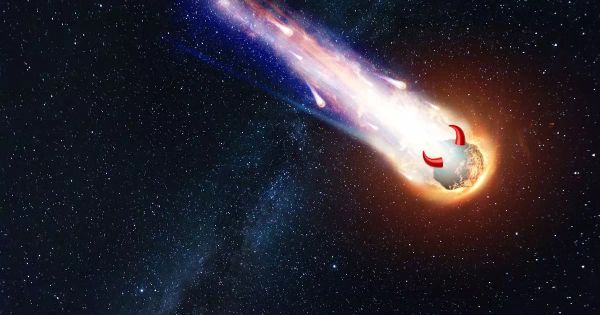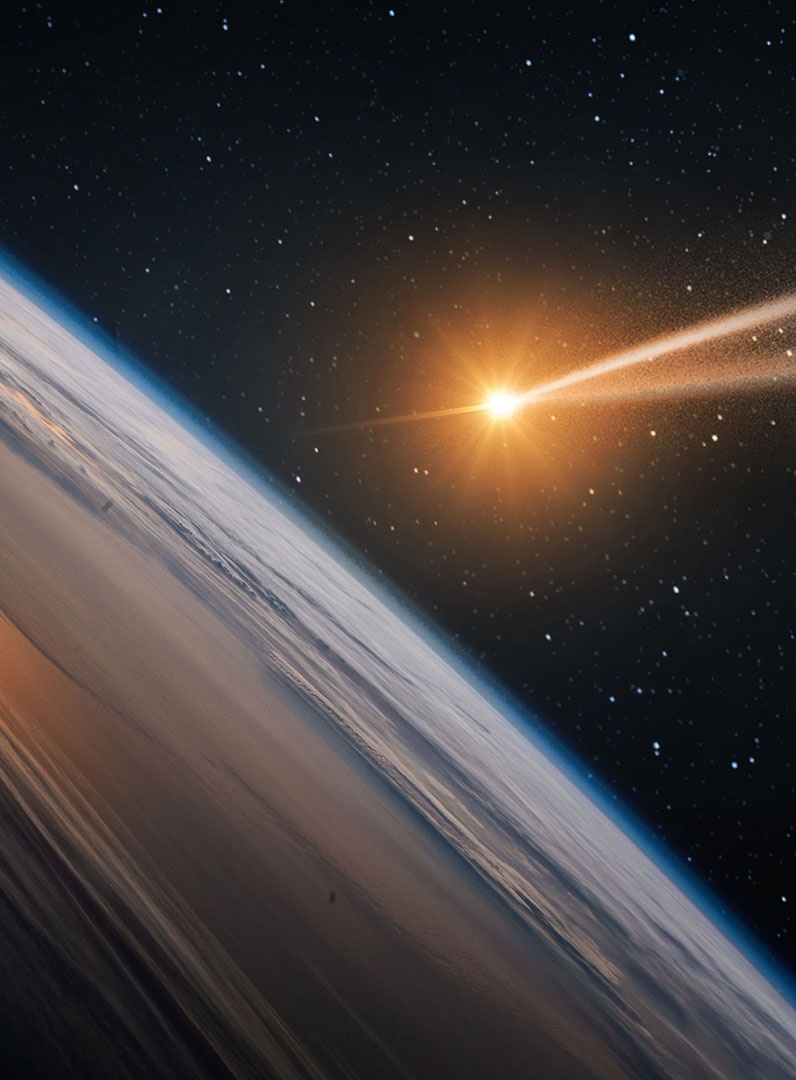
Astronomers have made an astonishing discovery as a massive volcanic comet hurtles towards Earth. The cryovolcanic comet, known as 12P/Pons-Brooks, has undergone a remarkable transformation and now sports a mysterious shadow. This icy behemoth, three times larger than Mount Everest, recently lost its distinctive horns in a violent eruption. But that’s not all – the comet has also taken on a vibrant green hue, leaving experts puzzled.
Expected to reach its closest point to Earth in June next year, this colossal 10.5-mile wide comet consists of an icy shell housing gas and ice. When the comet nears the sun, the intense radiation causes cracks to form, leading to the expulsion of a magnificent cloud. It is during this time that astronomers noticed the unusual green coloration surrounding the comet. The prevailing theory is that high levels of dicarbon present within the cloud react with sunlight, producing the eye-catching green pigment.
This year has seen three dramatic explosions from the comet, including a particularly memorable one on Halloween. These eruptions, a rare occurrence happening for the first time in nearly seven decades, cause the cloud surrounding the comet to inflate, creating the illusion of horns. However, the latest explosion on November 14, the largest thus far, surprisingly did not result in the reappearance of the distinctive horns.
Nick James, the Director of the Comet Section at the British Astronomical Association, stated, “There is no sign of any dark lane in the coma. The comet’s atmosphere appears perfectly circular this time.” This unexpected development has added to the intrigue surrounding 12P/Pons-Brooks.
Come June 2 next year, this captivating comet will be visible to the naked eye. However, eager stargazers can catch a glimpse of it anytime between May and the end of June. At present, the comet is situated near the Hercules constellation, in the East-North-East direction, at an altitude of 36 degrees above the horizon.
As the comet continues its approach, astronomers expect further explosive activity. However, the debris resulting from these explosions will remain in outer space. We will have to wait until 2095 before 12P/Pons-Brooks makes its next appearance, when it will swing by Earth, still remaining a staggering 144 million miles away.
Mark your calendars and prepare for a dazzling display from the volcanic “devil comet” as it journeys closer to our planet. Let us marvel at the wonders of the cosmic universe together.






